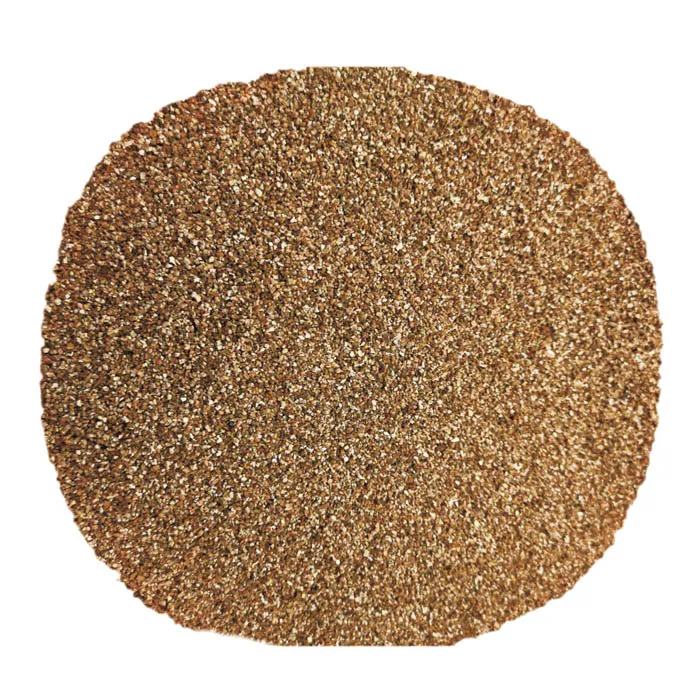May . 22, 2025 14:11 Bali menyang dhaptar
Garden Vermiculite: A Gardener’s Secret to Healthier, Lusher Plants
In the world of gardening and horticulture, soil composition plays a vital role in plant health. While organic matter and nutrients are essential, so too are soil conditioners that improve texture, aeration, and moisture retention. One such versatile and highly effective additive is vermiculite. Whether you're an experienced horticulturist or a backyard hobbyist, using garden vermiculite can significantly enhance your growing results.

What Is Vermiculite?
Vermiculite is a natural mineral, part of the phyllosilicate group, which expands when heated—a process called exfoliation. This expanded form is light, porous, and absorbent, making it ideal for use in gardening and agriculture. It’s often used in seed starting, potting mixes, and as a soil amendment.
When exposed to high temperatures, raw vermiculite flakes pop like popcorn and expand up to 30 times their original size. The resulting material is lightweight, sterile, and capable of holding water and nutrients while maintaining good aeration.
Benefits of Garden Vermiculite
Using garden vermiculite offers a host of benefits, particularly when mixed with soil:
Improves Moisture Retention: Vermiculite can absorb several times its weight in water, which it slowly releases to plant roots as needed.
Enhances Aeration: Its structure prevents soil from compacting, ensuring roots get the oxygen they require.
Promotes Root Growth: Consistent moisture and air supply help roots establish quickly and grow deeply.
pH Neutral: It doesn't alter the acidity or alkalinity of soil, making it safe for a wide range of plants.
Sterile and Non-toxic: Vermiculite is free of weeds, pests, and disease, making it safe for indoor and outdoor gardening.
Nutrient Retention: It can hold on to essential minerals such as potassium, calcium, and magnesium, slowly releasing them to plants.
These benefits make soil vermiculite ideal for seed starting, transplanting, hydroponics, and potting.
How to Use Soil Vermiculite in Your Garden
1. Seed Starting
Mix soil vermiculite with peat moss or a seed-starting mix to create a light and airy environment that encourages germination. It retains moisture well, reducing the risk of drying out during the delicate early stages.
2. Potting Mix
Blend vermiculite with garden soil, compost, and perlite for a balanced potting mix. The vermiculite will keep the soil fluffy and hold just the right amount of water for most indoor plants.
3. Soil Amendment
Work garden vermiculite into heavy clay soils to improve drainage and into sandy soils to help retain moisture. A 25–50% ratio by volume is typically effective.
4. Rooting Cuttings
Fill a container with pure vermiculite or a vermiculite/perlite blend, insert your cuttings, and water thoroughly. The medium’s sterility and water-holding capacity give new roots an ideal start.
5. Lawn Seeding
After sowing grass seed, spread a thin layer of soil vermiculite over the top to retain moisture, protect from birds, and promote even germination.
Choosing the Right Grade of Vermiculite
Vermiculite is typically available in different grades (coarse, medium, fine) based on particle size:
Coarse Grade: Best for large plants and soil aeration.
Medium Grade: Most commonly used in general gardening.
Fine Grade: Ideal for seed starting and young seedlings.
When buying vermiculite, make sure to select the appropriate grade for your specific gardening needs.
Is Vermiculite Safe?
Modern vermiculite used in gardening is safe, sterile, and asbestos-free. Historical concerns about asbestos contamination were linked to a single mine in Libby, Montana, which has long since been closed. Today, vermiculite sold for horticulture is rigorously tested for safety.
When handling, especially indoors or in dry environments, it's still wise to wear a mask or dampen the material to reduce dust.
Vermiculite vs. Perlite: What’s the Difference?
While both are popular soil additives, vermiculite and perlite serve slightly different functions:
|
Feature |
Vermiculite |
Perlite |
|
Water Retention |
High |
Low |
|
Aeration |
Moderate |
High |
|
Texture |
Softer, compressible |
Hard, brittle |
|
Best for |
Water-loving plants, seedlings |
Cacti, succulents, drainage |
For most gardeners, a mix of both provides the best of both worlds.
Vermiculite FAQs
Q1: Can I use vermiculite alone to grow plants?
A: While vermiculite retains moisture well, it lacks nutrients. It’s best used as a component of a balanced soil mix unless you're using hydroponic nutrients.
Q2: How long does vermiculite last in soil?
A: Vermiculite is stable and doesn't decompose. It can remain effective in soil for many years.
Q3: Is vermiculite organic?
A: Vermiculite is a naturally occurring mineral but not classified as organic since it's not derived from living material. However, it's allowed in most organic gardening practices.
Q4: Can I reuse vermiculite?
A: Yes, you can reuse soil vermiculite, especially if used in seed starting or potting. Just be sure to sterilize it to avoid carrying over any pathogens.
Q5: What plants benefit most from garden vermiculite?
A: Plants that love moisture and consistent soil conditions—like ferns, African violets, and leafy greens—thrive with garden vermiculite.
Whether you're sowing seeds, amending tough soil, or creating the perfect potting mix, vermiculite is an invaluable ally in your gardening toolkit. Lightweight, moisture-retentive, and easy to use, it enhances plant growth while making garden management easier. With so many benefits and applications, it's no wonder more gardeners are turning to garden vermiculite to boost plant health and improve yields. When buying vermiculite, choose a quality product that matches your needs—and watch your garden flourish.
-
Strength with Premium Steel and Calcined Bauxite
KabarJul.28,2025
-
Revolutionize Construction Efficiency with Smart Industrial Materials
KabarJul.28,2025
-
Redefined with High-Grade Iron Powder Solutions
KabarJul.28,2025
-
Metallurgical Efficiency with Innovative Recarburisers and Covering Agents
KabarJul.28,2025
-
Industrial Efficiency Enhanced with High-Performance Recarburizer Solutions
KabarJul.28,2025
-
Boosted by Advanced Iron Powder and Carbon Additive Solutions
KabarJul.28,2025
